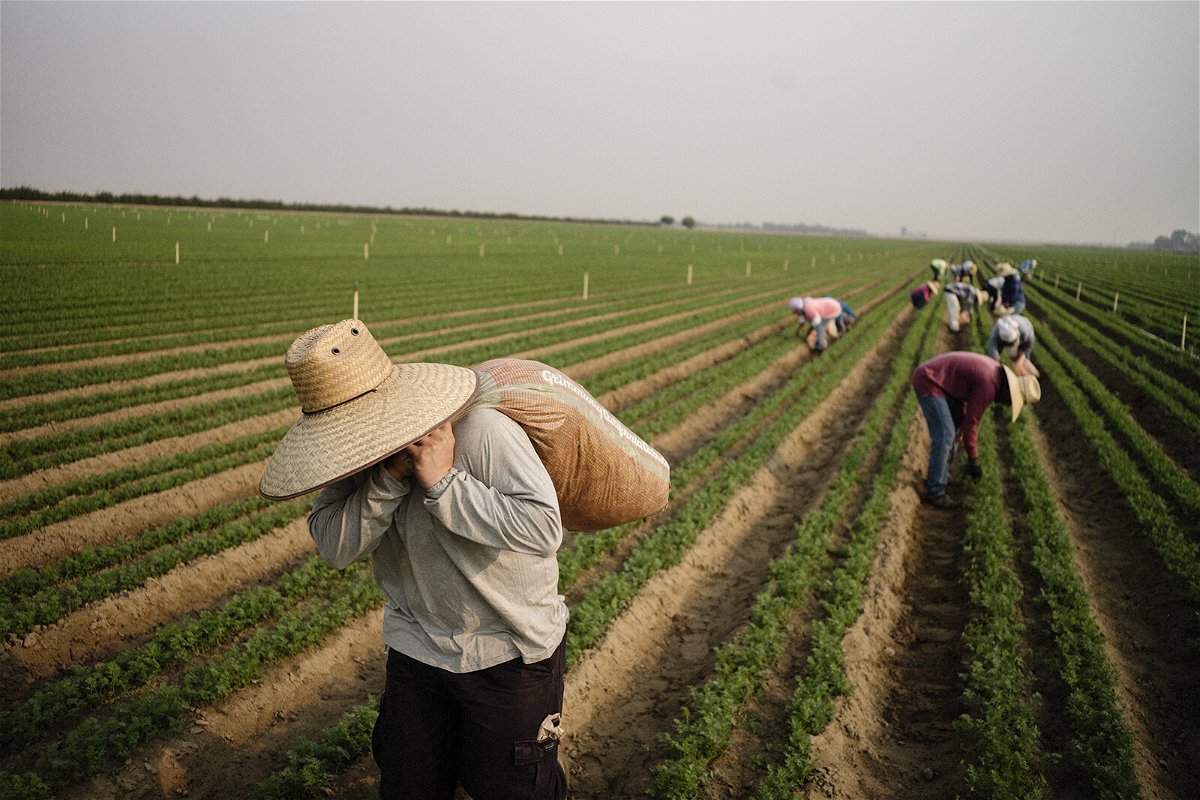The West is caught in a vicious climate change feedback loop

By Rachel Ramirez, CNN
After a deadly, climate change-fueled heat wave smothered the Pacific Northwest at the end of June, historic heat threatens records once again, particularly in the drought-stricken Southwest region.
More than 30 million people are under heat warnings and advisories. The National Weather Service says the risk level for this heat wave is “very high” — dangerous for not just those with underlying health issues, but the entire population, especially those who work outdoors. The overnights, which in some places will only drop to the mid-80s, will bring little relief.
As temperatures climb to the triple digits, the sun will bake out what little moisture there is in the ground, worsening the West’s unprecedented drought. Scientists say heat and drought are inextricably linked in a vicious feedback loop that climate change makes even harder to break: heat exacerbates the drought, which in turn amps up the heat.
“As we’re getting these very extreme heat waves, it’s just making the drought even worse, even though drought is initially caused by the lack of precipitation,” Julie Kalansky, a climate scientist at Scripps Institution of Oceanography in San Diego, told CNN. “But during the dry months of much of the West, these heat waves just continue this drying throughout the summer and into the fall.”
More than 93% of the West is in drought this week, according to the US Drought Monitor, the largest area on record in that region. Nearly 60% of the west is in the two most-severe drought categories, extreme or exceptional.
Three of the states entirely in drought conditions are also at the center of this weekend’s heat wave: California, Nevada and Utah.
Death Valley in Southern California is forecast to reach 130 degrees or higher on Sunday and Monday, within stones throw of the hottest temperature ever recorded on the planet — 134 degrees at the same location in 1913.
Kern County, California, about a three-hour drive west of Death Valley, is expected to reach triple digits as well. Juan Flores grew up in a family of migrant farm workers in Kern. He worked in the grape fields in sweltering conditions on summer breaks, and remembers a previous extreme drought in 2011, when many migrant farm workers — including his parents — struggled economically.
“With the drought, you’re going to have less crops, and because you’re going to have less crops, you’re going to need less people,” Flores told CNN, “and then all of a sudden, folks are going to be on unemployment benefits, but those benefits don’t last forever.”
Although his parents are in a better economic situation, Flores said many migrant farm workers will still bear the brunt of climate change-fueled economic challenges as severe weather events become more frequent and more extreme.
“We’ve got to talk about a national emergency, especially in Kern County, because we’re considered the fruit basket of the nation,” said Flores, who is now a community organizer with the Center on Race, Poverty, and the Environment, a national environmental justice group.
Kalansky said strong storms that draw moisture from the Pacific Ocean, often referred to as atmospheric rivers, are crucial in determining whether California is going to end up in drought. In the last two years, however, only one such storm brought precipitation to California this winter.
During extended periods of heat, like what the West has endured this summer, dry air evaporates water from the soil, which worsens the drought — another reason water shortages are cropping up; not only has there not been enough rain to fill reservoirs, the air is leeching water from what’s left of them.
The heat and the water shortages hit farming communities from several angles.
“When you have high heat in these in agricultural communities, it can be very dangerous and hard to work outside too,” Kalansky said. “So that’s kind of a double whammy.”
The farm labor market in the US depends heavily on immigrants with very few legal protections. An analysis by the Union of Concerned Scientists found that from 2015 to 2016, only 24% of US farm workers were US citizens, while the remaining 76% were people of color. Many risked their lives crossing the border to escape climate-related challenges.
Extreme heat and drought compounds the health hazards farm workers regularly face in the fields, including exposure to pesticides and respiratory illnesses like asthma. During the unrelenting Pacific Northwest heat wave in late June, one farm worker in St. Paul, Oregon, died while working on a crew moving irrigation lines.
Adding insult to injury, Kalansky also warns that extreme heat, low humidity and the historic drought are a recipe for another destructive wildfire season.
“It primes the environment where if there is an ignition, it’s really dangerous in terms of fire because the fields are so dry,” she said. “And then if you add winds to it, that’s when you really get these very dangerous conditions for wildfires.”
As temperatures continue to surge, Kalansky said that these extreme weather events are merely a preview of what’s to come if the world continues to spew planet-heating emissions.
“I would be thoughtful of how to mitigate the impacts now, in an equitable way, especially for communities that are most impacted,” she said. “It’s something very important to think about now and that will serve well, because this is likely to happen again in the not too distant future.”
The-CNN-Wire
™ & © 2021 Cable News Network, Inc., a WarnerMedia Company. All rights reserved.